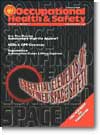
February 2006
- Essential Elements of Confined Space Safety
- Are You Buying Substandard Hi-Vis Apparel?
- AEDs and CPR Converge
- Automation Cures Lifting Injuries
Click here to subscribe.
Cover Story
By Stephen V. Magyar, Jr., MBA, CSP
SAD but true: In spite of all safety regulations and precautions, almost 500 deaths occurred in confined spaces during the past five years. Seventy-five percent of these deaths involved skilled workers who were cleaning, repairing, or performing routine maintenance.
Features
By Jeff Hendrickson
IN the fire alarm industry, there have always been two principal options for fire alarm systems: conventional systems and analog/addressable systems. As you might imagine, there was a time not too long ago when conventional systems were the systems of choice for most buildings.
By Jerry Laws
BUYING and wearing appropriate high-visibility apparel--appropriate in the sense that the wearer is conspicuous and highly visible given the task he or she is engaged in--became much easier last fall with the update of the first American National Standard for high-visibility safety apparel, ANSI/ISEA 107-1999. Sept. 15, 2005, was the date the American National Standards Institute approved ANSI/ISEA 107-2004, which was devised by the ISEA High Visibility Products Group with help from employers, material suppliers, testing labs, safety professionals, and others.
By Jack Rubinger
"YOUR Speed" driver feedback signs have become increasingly popular devices for slowing traffic and increasing workers' safety. Thanks to new technologies, these signs have become more effective and easier to deploy than ever before.
By Randall Moore
TOM Davis worries about twisted knees, broken ankles, medical bills, recovery periods, new recruits, and overtime. He is not a coach, yet he has responsibility for 13 "teams."
By Rex Coppom
THE United States may never be the target of a large-scale bioterror attack, but homeland security officials continue to urge vigilance and preparedness. Every facility manager can take a number of simple steps to improve a building's preparedness for such an attack, and many of these steps include improvements to the facility's HVAC system.
Departments
By Marc Barrera
WHAT if you were sick and your doctor told you she could gaze into a crystal ball and show you what ails you? You might be skeptical or even begin to question your choice in physicians, but the truth is there is such a "crystal ball"--except it uses technology, not magic, and it's actually made of glass.
By Jerry Laws
Editor's note: Broad changes in the U.S. manufacturing sector and within the safety industry have made it more difficult to sell prescription safety glasses to employees, who collectively pay an increasing percentage of the glasses' cost, say Titmus Optical, Inc.'s Mike Franz, senior marketing/product manager, protective products, and Joe Parsons, director of sales.
By Andrew Marquardt
INDUSTRY has done a very good job at determining how to fix equipment to keep it up and running. And yet, how often do we look at a failed piece of equipment or equipment that has never worked quite right and blame the manufacturer for the problems?
By Jerry Laws
Editor's note: The "next stage" of AEDs promises to combine CPR and automated external defibrillation in a new, user-friendly way, says Jamie Froman, director of marketing for the commercial AED business of Philips Medical Systems (www.philips.com). Froman, who works in the company's Seattle, Wash., offices, discussed recent developments in AEDs and CPR on Nov. 22, 2005, with Occupational Health & Safety's editor. Excerpts from the conversation follow: